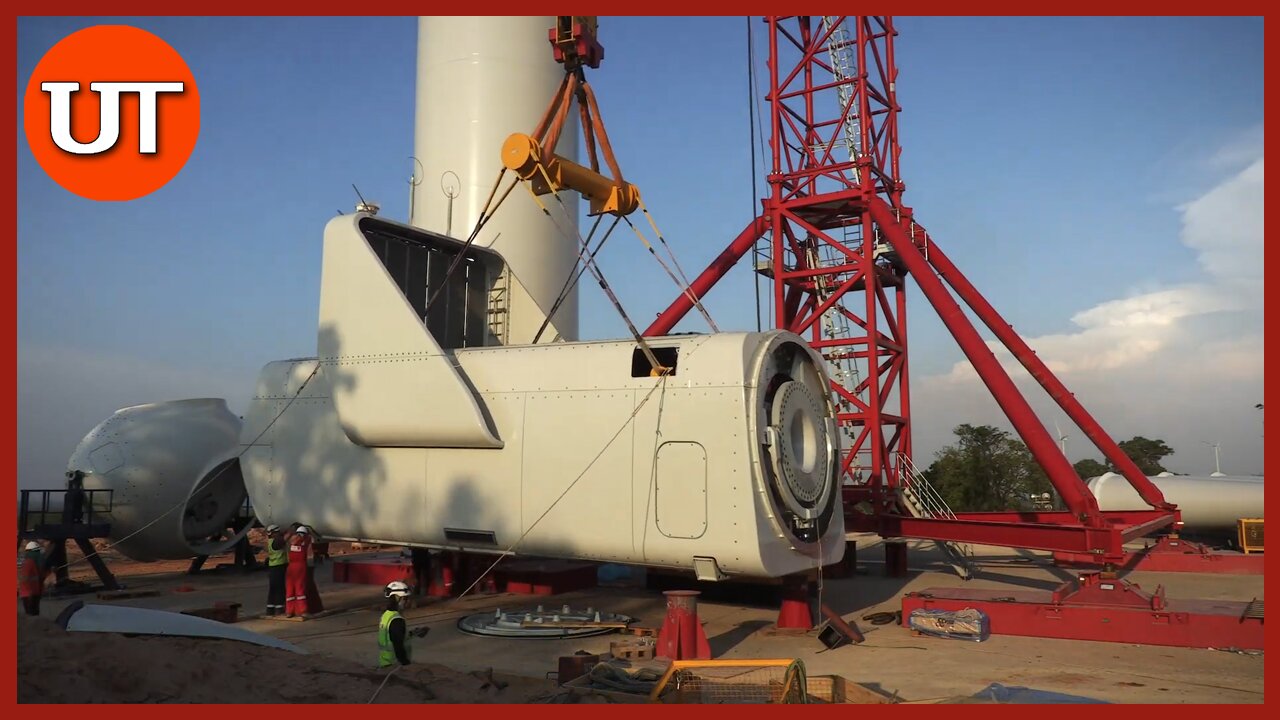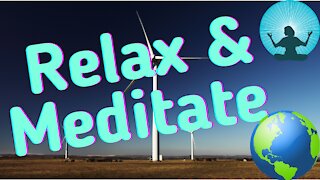Premium Only Content

Mammoet: wind turbine generator installation in less than 24 hours
The Heavy lifting and transport company Mammoet demonstrates a wind turbine generator installation in less than 24 hours. Generaly as you can imagine a wind turbine generator installation requires high skills and specialized equipment.
Mammoet installed a wind turbine generator on the Thepharak wind farm project, Thailand in less than 24 hours.
Mammoet used two innovative K1650L tower cranes for the project, performing both the craneage and installation of 60 wind turbine generators. Mammoet handled and installed over 700 wind components, weighing up to 120t each with a hub height of 157m.
Mammoet is the world’s leader in solutions for lifting, transportation, installation and decommissioning of large and heavy structures, has completed construction of the world’s largest offshore wind turbine.
This breathtaking wind turbine generator installation will blow your mind... and they installed it in les than 24 hours.
The wind energy industry is continuously increasing economies of scale to make wind a more cost-effective alternative to other energy sources.
For that purpose, wind turbines are getting bigger and higher – reaching physical limits as they become higher than conventional cranes can reach.
This also affects the efficiency of wind turbine maintenance activities. Mammoet recognized these developments and the limits that current cranes pose on the height and scale of wind turbines. Therefore, the company set out to develop two new cranes: one for wind turbine assembly and one for wind turbine maintenance.
Also if you do not know and want to know how a wind turbine works then please read bellow:
Wind turbines work on a simple principle: instead of using electricity to make wind—like a fan—wind turbines use wind to make electricity. Wind turns the propeller-like blades of a turbine around a rotor, which spins a generator, which creates electricity.
Wind is a form of solar energy caused by a combination of three concurrent events:
1. The sun unevenly heating the atmosphere
2. Irregularities of the earth's surface
3. The rotation of the earth
Wind flow patterns and speeds vary greatly across the United States and are modified by bodies of water, vegetation, and differences in terrain. Humans use this wind flow, or motion energy, for many purposes: sailing, flying a kite, and even generating electricity.
The terms "wind energy" and "wind power" both describe the process by which the wind is used to generate mechanical power or electricity. This mechanical power can be used for specific tasks (such as grinding grain or pumping water) or a generator can convert this mechanical power into electricity.
A wind turbine turns wind energy into electricity using the aerodynamic force from the rotor blades, which work like an airplane wing or helicopter rotor blade. When wind flows across the blade, the air pressure on one side of the blade decreases. The difference in air pressure across the two sides of the blade creates both lift and drag. The force of the lift is stronger than the drag and this causes the rotor to spin. The rotor connects to the generator, either directly (if it’s a direct drive turbine) or through a shaft and a series of gears (a gearbox) that speed up the rotation and allow for a physically smaller generator. This translation of aerodynamic force to rotation of a generator creates electricity.
-
 1:02:45
1:02:45
Relax and Meditate World
4 years agoPROUD WIND TURBINE
341 -
 18:12:15
18:12:15
Side Scrollers Podcast
1 day ago🔴SIDE SCROLLERS SUB-A-THON🔴FINAL DAY!🔴Craig Makeover + US Dart Throw + More!
542K31 -
 2:05:58
2:05:58
TimcastIRL
10 hours agoSHOTS FIRED, Leftists ATTACK Coast Guard & Feds In SHOCK Terror Attack | Timcast IRL
250K175 -
 1:07:25
1:07:25
Man in America
16 hours agoThe BRICS War on the Dollar Just Hit Endgame—What's Next Changes EVERYTHING
47K15 -
 3:23:45
3:23:45
SOLTEKGG
7 hours ago🔴LIVE - Community Game Night - GIVEAWAY
35.4K2 -
 8:22:30
8:22:30
SpartakusLIVE
9 hours ago#1 Friday Night HYPE, viewers GLUED to the screen
60.6K -
 55:50
55:50
NAG Podcast
8 hours agoAda Lluch: BOLDTALK W/Angela Belcamino
27.6K2 -
 2:45:31
2:45:31
VapinGamers
5 hours ago $10.43 earnedKellan Graves - Fallen - Game Review and Game KeyGiveaway - !rumbot !music
26.5K -
 1:06:41
1:06:41
MattMorseTV
8 hours ago $40.93 earned🔴Trump PREPARES for WAR with VENEZUELA.🔴
52.6K72 -
 39:59
39:59
Clownfish TV
12 hours agoHollywood NO MORE! Animation Industry Will DIE First?! | Clownfish TV
30.2K2